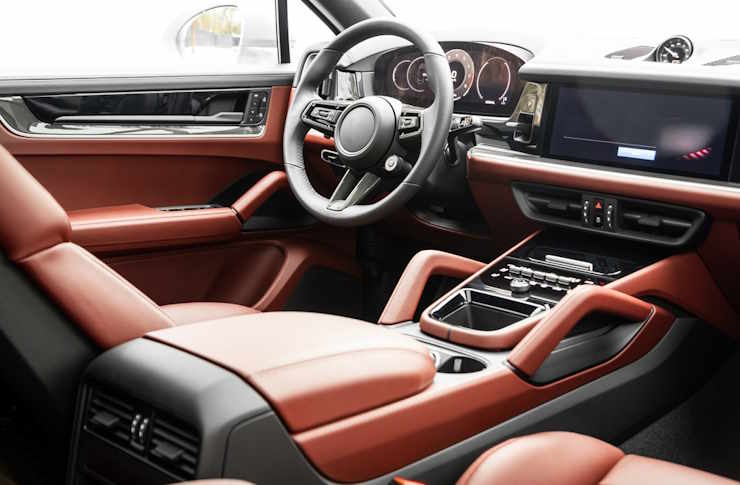The Hidden World of Automotive Ergonomics
Imagine settling into the driver's seat of a car, your hands instinctively finding their perfect position on the steering wheel, your eyes effortlessly scanning the dashboard, and every control within comfortable reach. This seamless interaction between driver and machine is no accident – it's the result of automotive ergonomics, a fascinating yet often overlooked aspect of car design that shapes our driving experience in profound ways.

The Evolution of Automotive Ergonomics
The concept of ergonomics in automotive design has come a long way since the early days of motoring. In the pioneering years of the automobile, little consideration was given to driver comfort or ease of use. Early cars often had awkward seating positions, unintuitive controls, and poor visibility. As cars became more prevalent and driving distances increased, the need for better ergonomics became apparent.
The post-World War II era saw significant advancements in automotive ergonomics. Manufacturers began to pay more attention to driver comfort and safety, leading to innovations such as adjustable seats, improved visibility, and more intuitive dashboard layouts. The 1960s and 1970s brought further refinements, with a focus on reducing driver fatigue and improving overall comfort during long journeys.
The Science Behind Automotive Ergonomics
Automotive ergonomics is a multidisciplinary field that draws on various scientific principles. Anthropometry, the study of human body measurements, plays a crucial role in determining the optimal dimensions and layout of vehicle interiors. Cognitive psychology informs the design of instrument clusters and infotainment systems, ensuring that information is presented in a way that minimizes driver distraction and cognitive load.
Biomechanics, the study of mechanical laws relating to the movement of living organisms, is essential in designing seats that provide proper support and reduce fatigue during long drives. Additionally, human factors engineering principles are applied to create intuitive interfaces and control layouts that align with drivers’ natural expectations and behaviors.
Key Elements of Ergonomic Car Design
Several key elements contribute to a well-designed, ergonomic vehicle interior. The driver’s seat is a critical component, designed to provide proper support for the spine, reduce pressure points, and allow for a range of adjustments to accommodate different body types. The steering wheel and pedals are positioned to allow for comfortable operation without undue strain on the arms, legs, or back.
The instrument panel is another crucial area of focus. Modern designs aim to present essential information clearly and concisely, often using digital displays that can be customized to individual preferences. Controls for frequently used functions, such as climate control and audio systems, are typically placed within easy reach of the driver.
The Impact of Technology on Automotive Ergonomics
The rapid advancement of technology has had a significant impact on automotive ergonomics. The introduction of touch screens and voice-controlled systems has presented new challenges and opportunities for ergonomic design. While these technologies offer greater flexibility and functionality, they also require careful implementation to ensure they don’t increase driver distraction or cognitive load.
Heads-up displays (HUDs) represent an innovative approach to presenting information to drivers. By projecting key data onto the windshield, HUDs allow drivers to access important information without taking their eyes off the road. Similarly, adaptive interfaces that change based on driving conditions or driver preferences are becoming more common, offering a more personalized and potentially safer driving experience.
Ergonomics and Safety
The relationship between ergonomics and safety cannot be overstated. A well-designed, ergonomic interior can significantly reduce driver fatigue, which is a major factor in road accidents. Proper seat design and positioning can also improve a driver’s ability to react quickly in emergency situations. Moreover, intuitive control layouts and clear information displays can minimize the time a driver needs to take their eyes off the road, further enhancing safety.
Ergonomics also plays a crucial role in the design of safety systems themselves. The positioning of airbags, the design of seatbelts, and the layout of emergency controls are all influenced by ergonomic principles to ensure they function effectively in the event of an accident.
Future Trends in Automotive Ergonomics
As we look to the future, several emerging trends are set to shape the field of automotive ergonomics. The increasing prevalence of driver assistance systems and the eventual transition to fully autonomous vehicles will require a fundamental rethinking of vehicle interiors. Without the need for constant driver attention, car cabins may evolve into more versatile spaces, accommodating a wider range of activities.
Biometric sensors integrated into vehicle interiors represent another promising area of development. These systems could monitor driver stress levels, fatigue, and even health status, adjusting vehicle parameters or providing alerts as needed. Additionally, augmented reality technologies could revolutionize how information is presented to drivers and passengers, creating more immersive and intuitive interfaces.
The field of automotive ergonomics continues to evolve, driven by advances in technology, changing consumer expectations, and an ever-increasing focus on safety and comfort. As we move towards a future of increasingly sophisticated and connected vehicles, the principles of ergonomic design will play a crucial role in shaping our relationship with cars. By creating vehicles that are not just machines, but extensions of our own bodies and minds, automotive ergonomics will continue to enhance the driving experience, making it safer, more comfortable, and more enjoyable for all.





